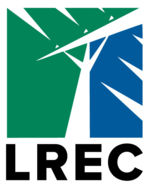The Value of Electricity
It’s a typical morning. The alarm goes off and your feet hit the floor. The floor is not cold because the room’s thermostat is set to a comfortable setting. You flip on the light switch and rub your eyes. Next stop, a nice warm shower and drying off with a clean, fluffy towel. You put on freshly laundered clothing and head into the kitchen. The coffee maker has already been preprogrammed and you can hardly wait for those first wake-me-up sips. Maybe you open the refrigerator to take out some orange juice. A tasty breakfast of scrambled eggs and a toasted bagel would be the perfect way to start this morning.
Does this scenario sound familiar? It sounds like a normal morning routine that is repeated daily in thousands of area households. All of these steps likely happen within a half-hour or so. In that short amount of time, how many ways did electricity make your life easier, more convenient, and more satisfying? Well, let’s count — there is the home heating, lighting, hot water, clothing and towels that had been washed and dried, food storage, and food preparation and cooking appliances.
Did you also turn on the radio or television to catch the latest weather or headlines? Did you use a hair dryer or styling iron? Did you take a clean plate and cup out of a dishwasher? This winter, will you use an engine heater to make sure your vehicle starts? Will you use a computer or charge your smart phone at some point during the day?
I’m sure you see where I’m going with this. Electricity is such an integral part of our lives that its value is often overlooked. Electricity is our silent, invisible, and ever-ready servant. For all that it does for our families, it remains a wonderful value. Compared to other products, the cost of electricity has remained quite stable for many years. Yes, it has gone up some, but nowhere near the percentage of increase we’ve seen in many other products and life essentials. Would you say that the daily cost of the electricity you use is worth every bit of a fast-food value meal? For many typical households, that is about the daily cost equivalent! Are you surprised? Perhaps you’ve never thought of electricity this way.
To help you better understand and control the amount of electricity used in your household or business, please utilize MyMeter. It’s an easy way to monitor your electric consumption, spot trends, and set energy conservation goals. This is an engaging way to get the entire family thinking about the electricity they use. It’s simple to use and you can easily access MyMeter here.
Cost of Service Study
Last month, I shared with you an update on a comprehensive cost of service study underway at Lake Region Electric Cooperative. The study is now complete. Because we are owned by our cooperative members and governed by a peer-elected board of directors, let me assure you that the care is being taken to make certain that fair and equitable rates are set across all rate classifications. Since 2013, Lake Region has faced $3 million in increased costs of wholesale electricity. However, we have also been able to tighten our belts, streamline operations, and create new revenue streams. This has allowed us to hold residential rates stable since 2013. Our interruptible heating program rates have stayed consistent since 2008. In an ever-changing environment for the energy industry, we are proud of this record.
However, the cost of service study is firmly rooted in dissecting all of the individual cost components that must be recovered through our rate structure. Lake Region’s largest single expense is the cost of wholesale electricity, which we in turn retail to our cooperative members. As wholesale power costs go up, so does the pressure on our budget. The only mechanism we have to recover these costs is through our rates.
Additionally, your board of directors has the responsibility of keeping your cooperative—the business you own and control—fiscally sound and with a solid backbone in terms of physical plant and technologies. The reliability of your electric service depends on it. Co-op members directly benefit from our focus on outage reduction, vegetation management, and service reliability. An example of how we’ve been reinvesting into our physical plant is the fact that in 2016 we will change out about 750 poles and about another 950 poles in 2017. The average cost to change out a pole is $1,600. Many of the poles we are replacing have been in service for decades. For the next five years we plan to change out nearly 1,000 each year.
The board is reviewing ways to simplify the residential rate structure. Currently, the first 1,000 kWh are billed at a higher rate than electric usage in excess of that threshold. With the proposed redesign, this two-stage rate will be replaced by a flat rate that has all kWh billed at the same rate for the month. The rational for the old two-stage rate was to help offset some of the fixed costs of providing electric service to members who use a minimal amount of electricity.
The cost of service study also clearly indicated that the facility charge portion of your monthly bill needs to increase. The facility charge is based on the actual fixed costs of providing your residence with an electric service, regardless of the amount of kWh consumed. Consequently, the board of directors is considering an increase of $3.00 per month to the residential facility charge, although the study showed that the actual increase should be closer to $5.00 per month. The board, however, feels that it would be better for our members to implement increases in the facility charge through smaller steps over time.
One Final Note

As I’ve travelled throughout our region these beautiful autumn days, it warms my heart to see the crop harvests underway. My appreciation of farmers and the many advances in agricultural equipment stems from my youth and time helping family bring in the harvest. It is my sincere hope that all our area farmers have a safe and abundant harvest.

 Lake Region Electric Cooperative
Lake Region Electric Cooperative